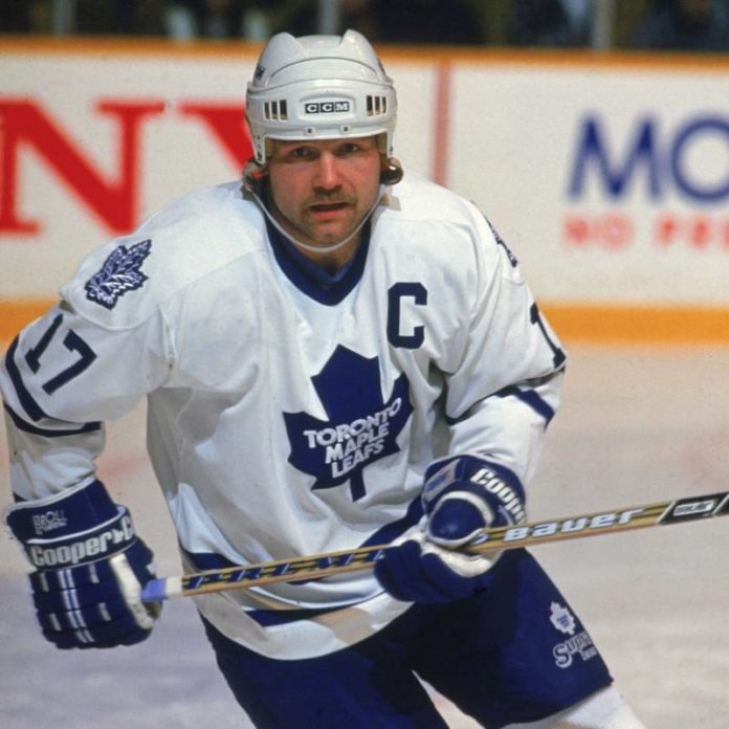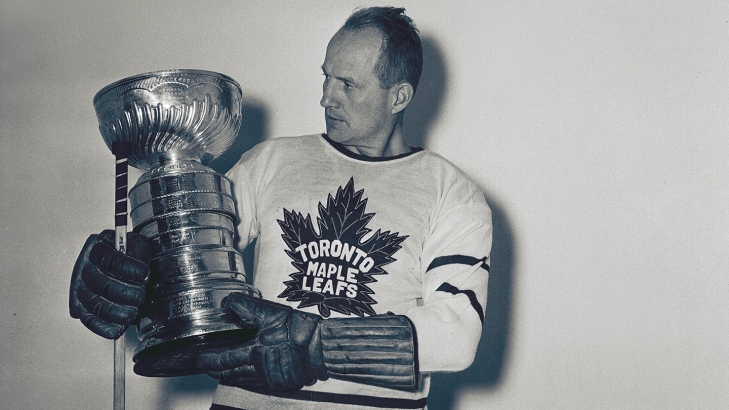
Committee Chairman
27. Wendel Clark
If this list were based purely on popularity, Wendel Clark would be near the top.
Clark was taken number one in the 1985 Draft, and he joined a struggling Maple Leafs team that lacked an identity. The Left Wing immediately became a fan favorite for his no-nonsense play, willingness to fight, and ability to score. As a rookie, Clark scored 45 Points and finished second in Calder voting to Gary Suter. The Left Wing had 60 Points as a sophomore, but in his third year, he began to be plagued with back problems that affected him for the rest of his career and resulted in many games lost.
Despite his medical setbacks, Clark remained the heart of the team and became the team captain. A trade from Calgary brought Doug Gilmour to the Leafs and with other pieces in tow, the Maple Leafs made a deep run in the 1993 Playoffs. Clark had his best year the season after, with a career-high 76 Points, but the Leafs dealt Clark to Quebec for Mats Sundin, and the Leaf Nation wept for days.
Clark returned two years later, where he was again oft-injured but always popular and pugilistic. He signed with the Tampa Bay Lightning in 1998 but made one more stop in Toronto to finish his career.
Of the 564 career Points Clark scored, 441 came in a Maple Leafs uniform. Toronto would hang his banner in 2008, with his number 17 retired in 2016.
26. Hap Day
Hap Day entered the NHL with Toronto as a rookie in 1924, where he played at Left Wing, leading the NHL in Assists (17). He would move to Defense afterward, playing competent two-way hockey before becoming a pure lockdown Defenseman in his fourth NHL season.
Day was very good in this role and became a team leader, earning the captaincy in 1926. He would later be paired with the legendary King Clancy, and the two would anchor the Maple Leafs to a Stanley Cup win in 1932. He played for Toronto until his contract was sold to the New York Americans in 1937.
Day returned to Toronto as a Coach, winning five Stanley Cups, and would capture one more as an Assistant General Manager.
The Hockey Hall of Fame inducted Day in 1961, and in 2006, his name was added to the honored greats at Air Canada Center. His number 4 (along with Red Kelly) was retired in 2016.
25. Carl Brewer
When it comes to hockey players who stood firm on their principles, Carl Brewer might have stood the tallest.
Brewer debuted in 1958 and was second in Calder Trophy voting for the 1958/59 Season. Showing grit on the defensive end and strong passing on the rush, Brewer quickly moved up to the upper-tier of blueliners in the NHL, earning three post-season All-Star Selections and anchoring them to three consecutive Stanley Cups (1962-64). Like so many Maple Leafs, Brewer began to have issues with management, namely Head Coach Punch Imlach.
Brewer abruptly retired and regained his amateur status, playing for Team Canada in the 1967 World Championship. He would also play and coach in Finland, and Brewer is credited with elevating their program. He did come back to the NHL, playing for Detroit, St. Louis and Toronto of the WHA before retiring again in 1974.
He would make a comeback for the Maple Leafs in January of 1980 for 20 Games after not playing for over six years and retired for good at season's end.
After his playing career ended, Brewer suspected that a substantial portion of the NHL's pension funds had been siphoned away to league owners. He was right, and $40 million was reimbursed, and Alan Eagleson, the Players' Association Executive Director, was charged with fraud and jailed.
The work that Brewer did behind the scenes in hockey should never be forgotten.
24. Joe Primeau
Joe Primeau played all of his ten seasons (1927-36) in the National Hockey League with the Toronto Maple Leafs, where he famously centered the “Kid Line” with Charlie Conacher and Busher Jackson as his wings.
A clean player who won the Lady Byng in 1932, Primeau took the Buds to the Stanley Cup that year, and his playmaking skills were on full display with his three Assists Titles. Primeau was also Second Team Al-Star in 1933-34, which was the last of three years he led the NHL in Assists.
Primeau was elected to the Hockey Hall of Fame in 1963.





